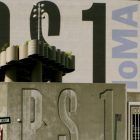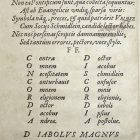REDACTED: Experiences with Digital Americana’s Interactive Literary Magazine
This post was written by John Rodzvilla, Emerson College’s Electronic Publisher-in-Residence.
There has always been somewhat of an unrealized promise of interactivity with digital literature. It should be more than an enhanced experience of the print original, but still reflect the intentions of the artists. The Electronic Literature movement has tried to legitimize and broadcast new formats from a variety of different artists and authors that expand the experience of literature. Authors of interactive fiction and alternative reality games have also taken the idea of story to a more immersive and interactive level. While these art forms are supported by a vibrant and active community, there the perennial question on monetization and distribution.
At the other end of the spectrum, trade literature has only just started to test the waters of enhanced content. For example, Michael Chabon’s latest novel, Telegraph Avenue has an enhanced digital edition that comes with an author interview, audio excerpts, a custom map of the locations within the novel, special designs from the artist Stainboy and an original theme song. The material is fun and enhances the reader’s experience, but it still controls the experience because, let’s face it, interactivity can be scary. The notion that authors should give up control of their world so that readers can interact and create new material is not something every wordsmith wants. There has always been this implicit relationship between artist/ writer and reader: I make. You buy and/ or experience.
Our media ecology has been helpful in maintaining the different spheres of commerce and art. Sure there were outliers (William Gibson and Dennis Ashbaugh’s Agrippa and Shelly Jackson’s Patchwork Girl, as two to that come quickly to mind), but it was expensive to attempt something non-linear and interactive. With smartphones and tablets, the marriage between conceptual and commercial is at hand.
Digital Americana is a magazine that has always been on the iPad. The interactive journal of fiction, poetry, nonfiction, art, & criticism released their first issue in April 2010 and offers three versions: a print edition, an iPhone edition and an iPad version. For their innovation the editors of this independent journal have been nominated for Magazine launch of the year (new format) and Specialist magazine of the year by the Digital Magazine Awards. The journal works with Appeal Software, a UK software developer, on the different versions for the Apple platform. They also publish a print version through Hewlett Packard’s Mag Cloud publishing platform. According to Editor-at-Large, Tony Fasciano, the magazine will continue to offer three versions, even though that means they need to produce three magazines for every issue to provide the optimal experience in each edition (more traditional layouts for print and tablet, a vertical layout for the limited screen size of the iPhone).
The Fall 2012 issue’s theme is redact. For anyone interested in reading about the high quality of the pieces in the issue, please see the review from New Pages and The Review Review. In conjunction with the new issue the journal also released a redesigned application that allows readers to redact material throughout available issues. The magazine and app are available through Apple’s Newsstand service, which provides access to a variety of online magazines and journals. The latest issue of Digital Americana has been in the “What’s Hot” section of the service since publication and has stayed there for the last month.
The iPad app has a special menu that allows readers to redact text throughout the magazine. A click of the redact button, and a menu pops up with the option of a highlighter, a redact marker, and a marker pen. The highlighter has six colors that can be used to color the text. Users can change the width of the mark from just less than a line to two lines. The redact marker can be used the same way, but limits color choice to a solid black or a solid white. The marker pen has eight colors and a definable width. Unlike the other markers, the pen does not adhere to the baselines of the text and can be used to circle, cross out or draw over the page.
Readers can use the redaction software on the current or previous editions of the magazine. It’s part of the user experience built into the touch features of a tablet (the iPhone version is limited to a more traditional reading experience due the phone’s physical limitations, particularly screen size and available memory). After the user has redacted parts of the page they can share their creation on Facebook, Twitter or as a photo on their camera. Digital Americana is also releasing another app called Redact! Which will allow readers to upload their own work to redact and play the Redact Challenge, “which is a visual poetry game, where we [the magazine] have provided the redactor with a set of words and various creative prompts to challenge them how they tackle redacting those same set of words . . . there are no points or ways to keep score, the only reward is if the user creates a poem they can appreciate or not.”
A thoughtful redaction requires a comfort and knowledge of the material we are hiding. Look at Austin Kleon’s work to get a sense of how the process works. Redaction’s focus on deletion rather than adding new works reminds us that every piece contains a multitude of poems, and that every experience is different. With redaction we can get an approximation of this literature of the multitudes.
When asked about the origin of the redaction project, Tony explained that the magazine “really wanted to do something productive with the tablet magazine concept, have fun with it — not just be a digital magazine for the sake of being a digital magazine.”
In order to go beyond the digital reflection of a print magazine, the editors had to work in tandem with their developers. While the editorial process was similar to previous issues, Fasciano was in constant contact with the developers as they built-in the Redaction tool and re-building the underlying magazine app to give a seamless experience to the reader. The magazine’s goal “is to continue to experiment as much as we can in the hopes of marrying form & function. And to show that we’re not just adding bells & whistles to distract the reader — our focus is always on the ‘words’ and the contributor’s piece, as well as creating a unique literary and new kind of interactive experience.”
For the literary marketplace, Digital Americana represents the beginning of how we can re-envision the literary magazine. The magazine balances this new model of creation/ consumption. The original text sits preserved in the code of the magazine. The redactions are only on the surface. They exist as snapshots of a conversation. Nothing is lost, just augmented and shared. The app reflects the new world of literature where the reader has the power and expectation to remix content and the author still yearns for a level of protection. It is audacious in its promise, but traditional in its format.
Digital Americana gives us the opportunity for multiple experiences: reading, playing, and sharing.
Digital Americana’s app and magazine can be downloaded through the Newsstand section in the iTunes store. Their Redact! app is also available through iTunes. Submission guidelines for spoken word performances and their next issue (deadline January 3, 2013) as well as instructions for ordering print issues can be found at http://thedigitalamericana.com.



